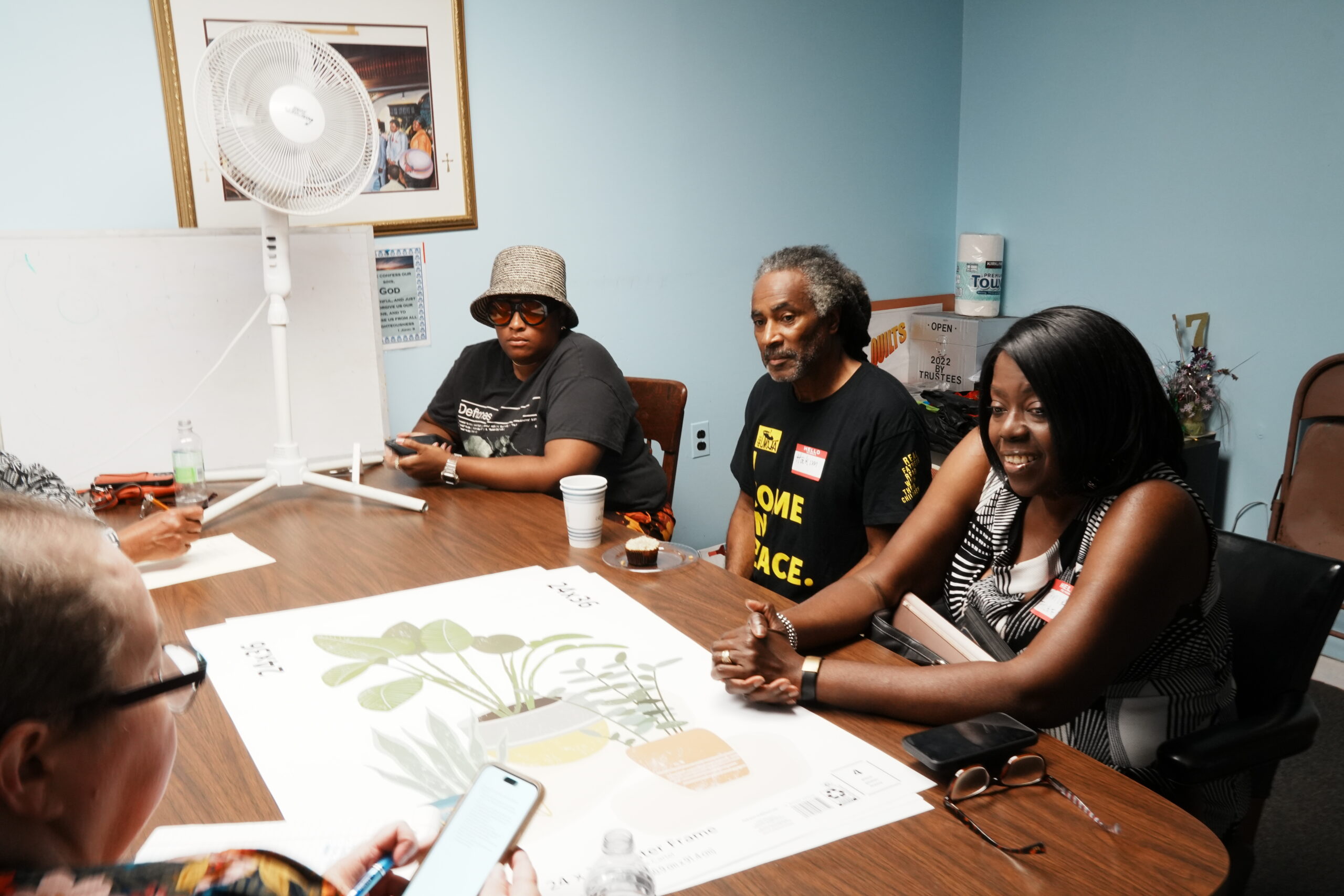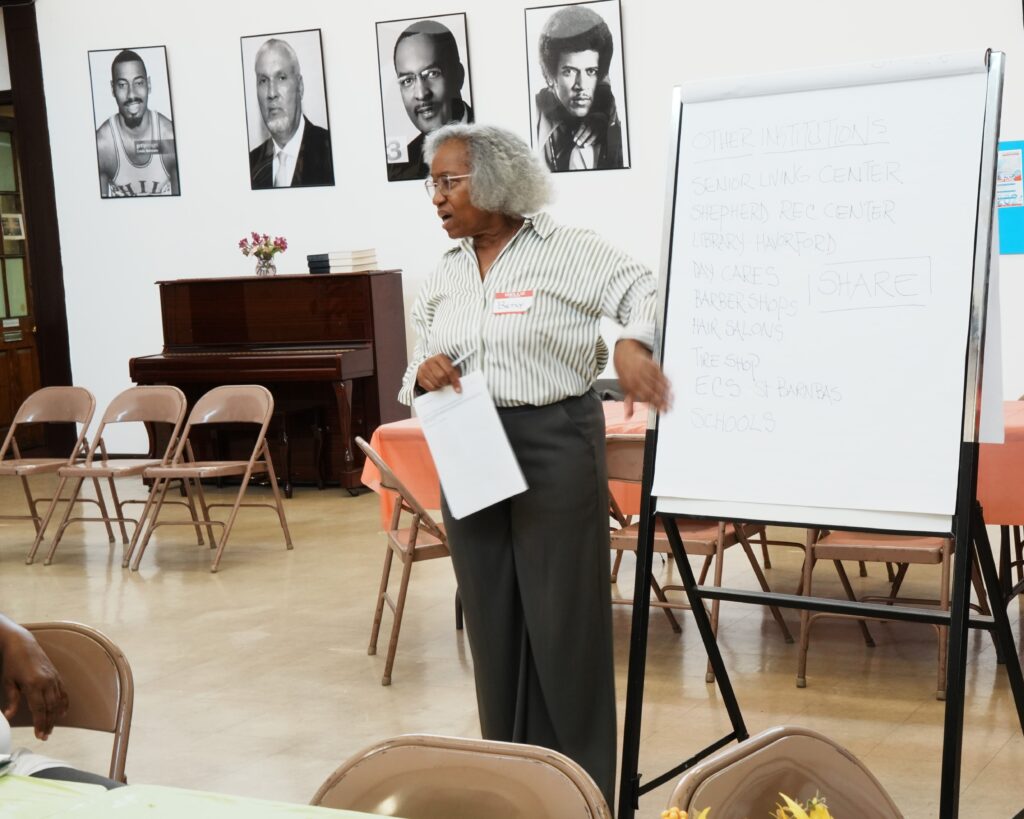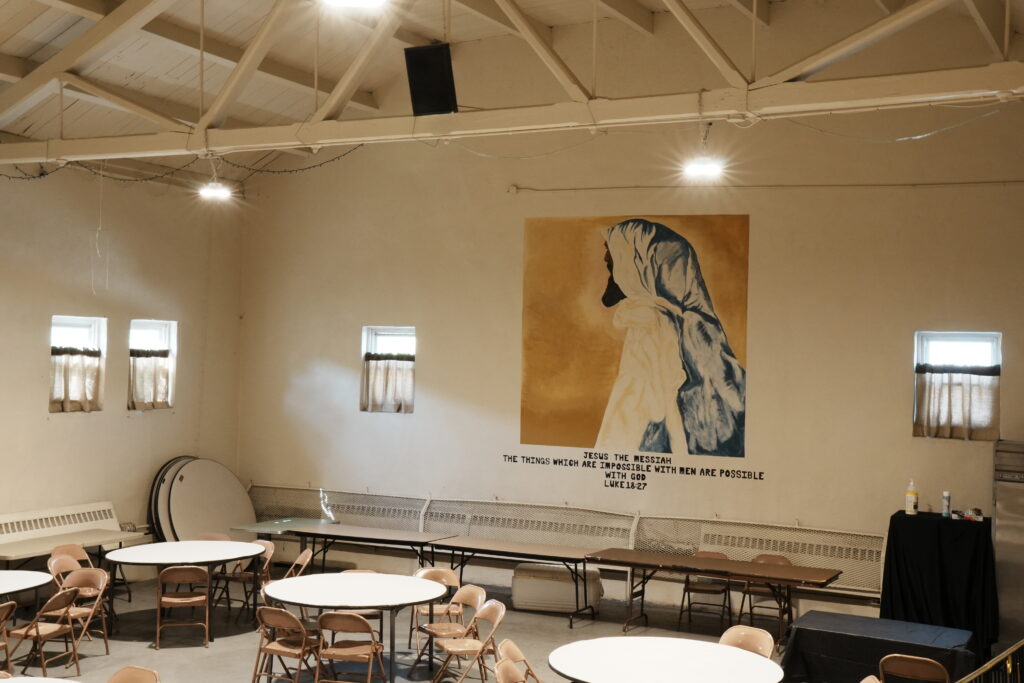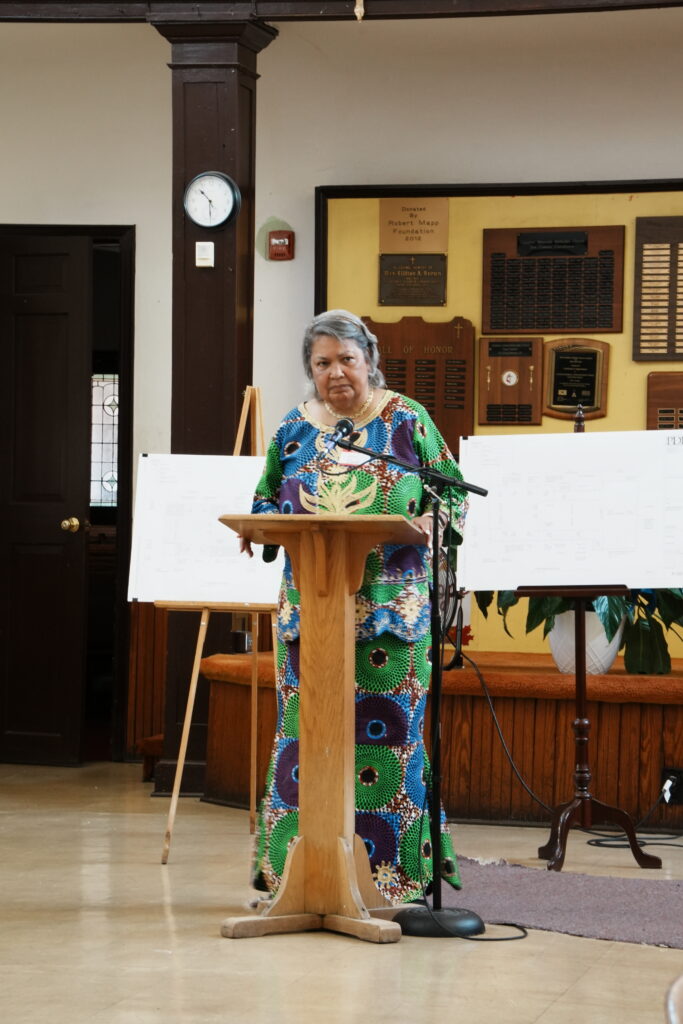
On Friday, September 13th, Camphor Memorial UMC hosted a Community Conversation designed to bring church members, neighborhood residents, and business and community leaders together to dream about how Camphor might be in ministry with their community.

The conversation opened with remarks from the Rev. Betsy Ivey, Director of the Philadelphia Fund for Black Sacred Places, a new resource from Partners for Sacred Spaces and the Philadelphia Preservation Alliance. The Philadelphia Fund for Black Sacred Places provides grant money to help preserve the physical property of Black sacred spaces in Philadelphia, as well as coaching and resources to help churches truly connect with their community.
Ms. Carol Black, lay leader of Camphor UMC, said that the grant gives “the churches money for bricks and mortar, but it’s to do ministry. Partners for Sacred Spaces is about turning these sacred places into places for the community.”
The success of the Community Conversation lay in the legwork that the church did ahead of time. Camphor Memorial hosted a Community Day in August, where they distributed backpacks to neighborhood children and created a safe and fun atmosphere. They asked everyone to register, which allowed Camphor to create a database of contacts in the neighborhood. Partners for Sacred Spaces encouraged the church to take it further and make connections with local businesses and organizations.
Two lay members from Camphor Memorial led the charge, contacting 140 businesses and organizations via phone and following up in person if they didn’t hear back. From those conversations, they learned something surprising. As Carol Black explained, “Although all the businesses were within two blocks of Camphor, they had never heard of us. They knew about the school that we had developed into a residence for seniors, but they never knew us.”
Just two local businesses came to Community Day, but fellow community organizations, block leaders, and neighbors all joined the conversation. In the words of Rev. Dr. Frank Moore, pastor of Camphor Memorial, “We are trying to talk to the community—to let the community tell us what their needs are, and we can share what our needs are.”
Architect Suzanne Amrich of Preservation Design Partnership, LLC, shared about Camphor Memorial’s needs. The water management system was inefficient, leading to frequent flooding in the basement. Updating the church’s drainage system could stop basement flooding and free up more space to be used for mission and ministry.
Camphor didn’t just tell the community their needs; they also showed everyone the possibilities the building had to offer and invited the community leaders to dream with them about how the space might be used to bless the community.

Ms. Sandi Stovall gave one of the tours. She led the group first to the church hall. “We do a lot of community funerals. People want to have a church funeral but are unchurched. We provide a space for them, and the funeral money is used to match our grant.”
She then took the group down into the basement classrooms. She showed us the room that used to be a credit union, took us to the choir room that once housed 70 voices and now only boasts 5. She took the group through the children’s Sunday School classroom and the former fellowship hall area that were water-damaged due to excess water runoff and an inadequately placed sump pump system.
While Stovall lamented the lack of voices to fill the choir room, she didn’t let nostalgia get in the way of new visions of God’s possibilities. “This could be a room for drumming, or perhaps it could be a study room for Black history… Something new to meet the needs of the community… Everything has changed about what church is and does. No matter what generation you are, faith is faith and love is love.”
After the tour, the groups headed into breakout sessions where church and community leaders discussed their hopes and dreams for the neighborhood.
Church members’ passion for their neighborhood shone forth as they engaged in conversation with neighbors and community leaders on how best the church could make an impact. The conversation flowed with wonderful ideas. Ms. Stovall shared, “We can be a provider of mental health resources here. We have community counseling. We’ve got hospitals, but our church is not connected to it.” Another member of the community shared, “What we lack is a network. When you and I were coming up, we had extended family available to us. We had Grandmom, an auntie, an uncle… For me, it was the cleaner down the street that I could go talk to. Camphor could be the support system. Raise up the value of family.” Ms. Tamika Pitchford, a community leader, shared, “The gym could house the homeless.”
As the time for conversation came to a close, the energy coalesced around becoming a safe place for the neighborhood children—a place where they could go if their mothers were running late or if they had forgotten their keys and were locked out.
A block captain shared that it would bring her joy to give a few hours of her time every afternoon and Saturday mornings.
A community leader who had never visited the church before offered to share his skills, saying, “I’m adding my service with the drums.”

The group conversations yielded new relationships and fresh possibilities. As she reflected on the day, Mrs. Carol Black shared her honest reflection: “We have often thought of our church as a safe sanctuary. We’ve never put it into action much except for our own members. It makes perfect sense for kids to come after school and even for seniors to come. We now have lots to do.”
A grant and some timely resources catapulted Camphor Memorial into a new era of ministry with their community. May God bless the work of their hands in this new season.
